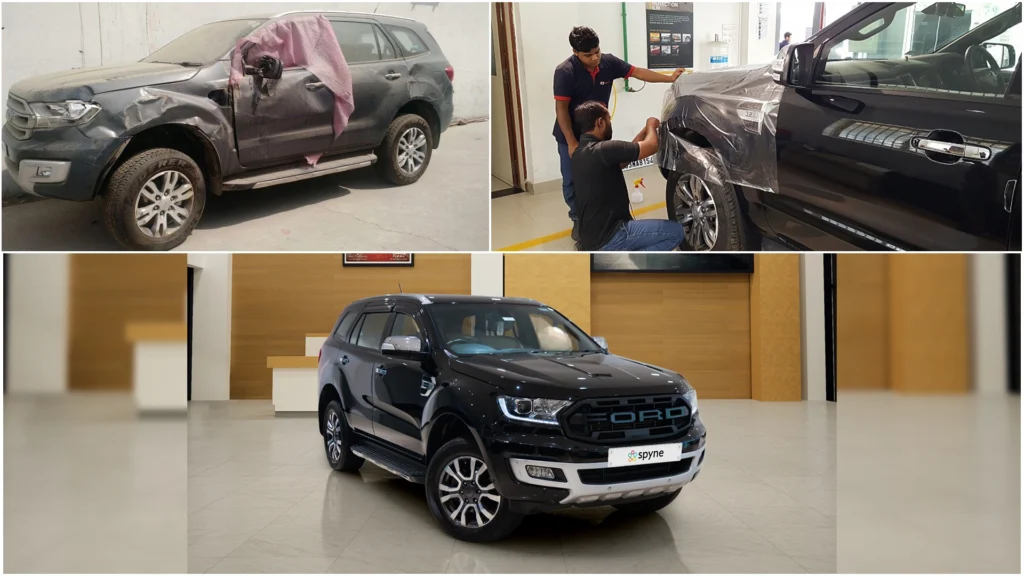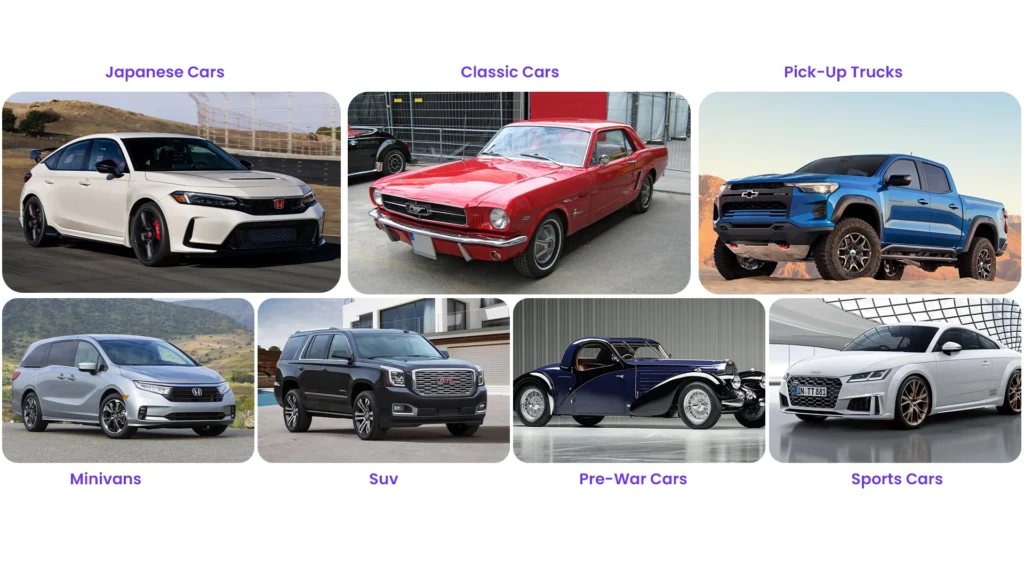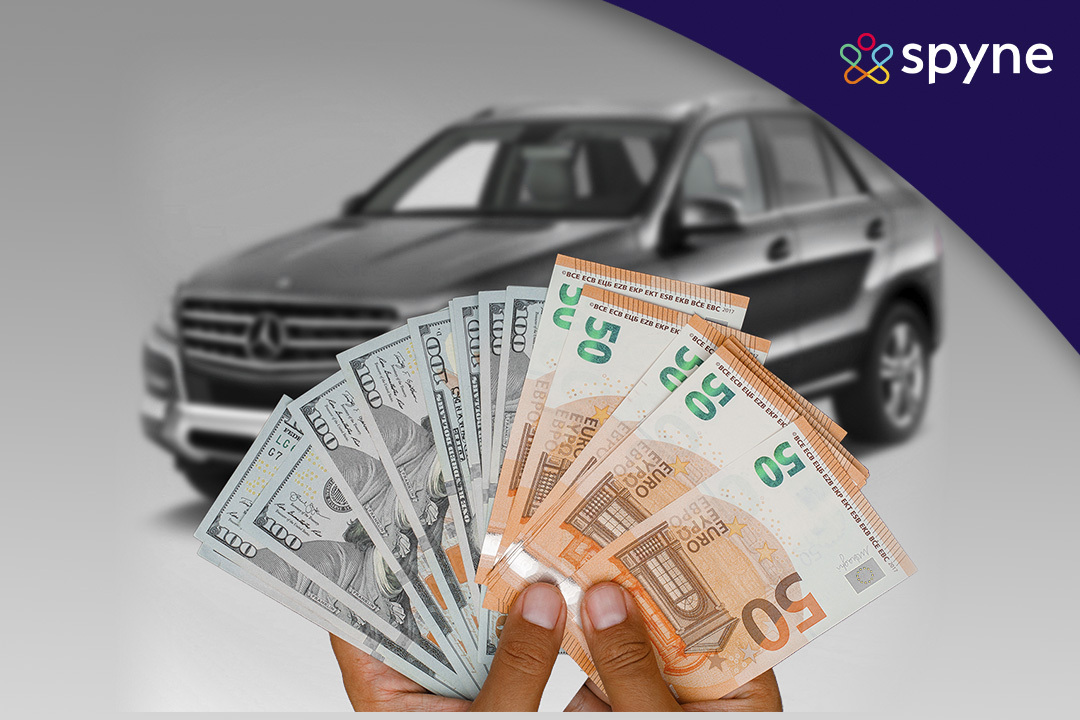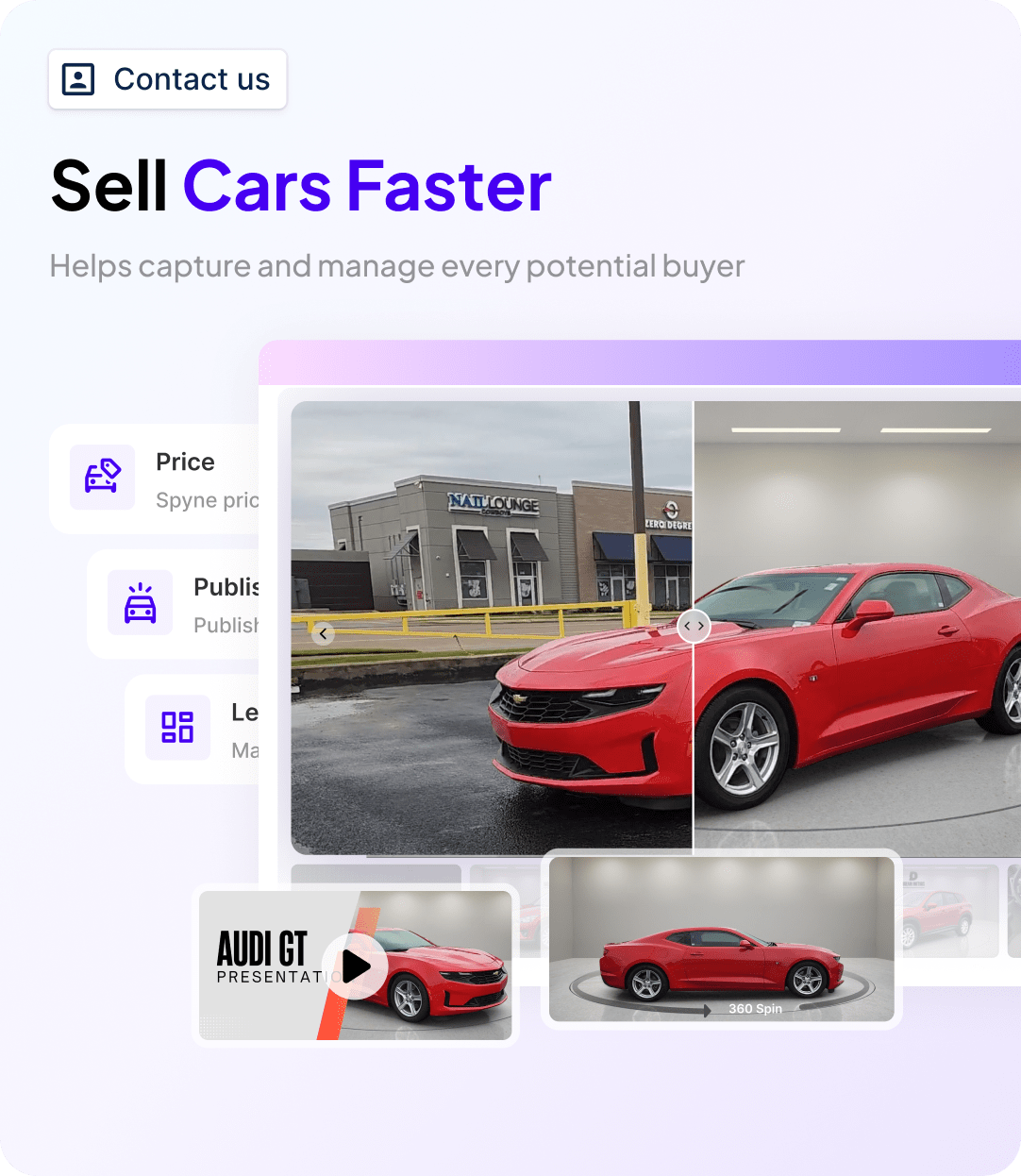Auction flipping cars is a great way to make money. It’s also a lot of fun and can be done on the side while you’re working full-time, or you can even turn it into a full-scale business. The concept of “car flipping” is relatively easy; you buy a vehicle at a reasonably low price, fix it up, and then sell it at a higher price for a nice profit. Some people might have a question is car flipping illegal? The process of buying, fixing, and selling cars is too lengthy and complicated, so is flipping cars profitable?
The answer to these questions is, Yes Car flipping is legal, and yes and the process has become much more straightforward and profitable with regular local auctions and the introduction of car auction websites. An average car flipper can profit around $1200 per car (ridester), which is quite alluring!
What is Auction Flipping Cars?
Flipping cars includes buying a used car at a lower price and selling it quickly for a higher price. Usually, people prefer to flip used cars, but you can also find people flipping new cars. The buying and selling for flipping is done privately and not through a dealership. The auto market has changed in the last few years, and this is one of the numerous new opportunities that are now available to make huge profits.
Difference Between Car Flipping and Reselling
Flipping and reselling are often used interchangeably, but even though they seem similar, there is a critical difference between them. Flipping refers to buying something, fixing it up (if necessary), and selling it quickly for a profit. Reselling, however, may or may not be for a quick buck. Some resellers can hold on to their assets for a long time, waiting for the market demand to reach a peak or for the correct buyer to show up. Used car dealerships function along the same lines – acquire pre-owned vehicles, fix them up, and then list them for sale, waiting for interested buyers to show up. While the car flipping business might seem enticing, it isn’t without disadvantages. Let’s take a look at what’s good and what’s not.
What are the Advantages & Disadvantages of Auction Flipping Cars?
You can do an auction car flipping business for a living or as a one-time thing. Flipping cars allows a car enthusiast to delight in their interest and earn revenues. Here, we have discussed some pros and cons of flipping auction cars that will help you decide to take a step toward this venture.
|
Advantages of Car Flipping |
Disadvantages of Car Flipping |
| Quick profits: When done right, profits can range from $500-$2000. How much profit you make depends on factors like demand, rarity, price, etc. | Unanticipated Expenses: Sometimes, the car you source turns out to have hidden issues, which increases the repair budget. These may be from undiagnosed faults, mechanical defects, etc. |
| Gaining mechanical knowledge: Fixing up cars helps you to understand the cost of repairing the mechanics, the body, or electrical repairs. This experience will help earn higher profits in future flips. | Over-Committing: Complications can lead to time delays or throw off your budget. A complicated car can be challenging to deal with. You have to be realistic about your abilities and outsource work when needed. |
| Being your own Boss: In this business, you would be in charge. Flipping cars for profit requires constant effort. However, if you do it alone can grab all the profit for yourself. | Holding Costs: The longer you have the car, the more money you lose on maintenance and cleaning. It depreciates the value when selling a relatively new car. |
| Job Satisfaction: Flipping a car successfully can be a source of great personal pride, apart from financial returns. | Difficulty Selling: Sometimes, you won’t find buyers for your vehicles as soon as you’re done flipping. This further increases the holding costs. |
| Bare investment: Car flipping doesn’t require any investment to make. You can start it on a short scale and can earn profits without adding much investment. | Time-Consuming: If you’re working alone, or on a team. Flipping a vehicle will be a time-exhausting activity. |
How to Flip Cars?
Auction car flipping for car enthusiasts is a great opportunity to make some real cash. They can use their interest and knowledge to keep themselves engaged in the game of flipping cars. If you are new to flip cars and want to learn its trends. I have mentioned some golden points for you to begin your journey with:
Step 1. Look for undervalued vehicles
After knowing the state and local automotive codes and getting a license, find out where you can get your hands on undervalued cars. Common options include the following:
1) Certified Ad Websites: You can use car auction websites to find cars on the internet quickly. They usually have a search filter that allows you to find vehicles by make, model, or price range. Salvage Bid, eBay Motors, and Auto Auction Mall are great examples of such car auction websites.
2) Public Auctions: You can also visit local auctions to find cars if you are unfamiliar with how the car auction websites work. You can follow magazines, like Auto Dealer Today and Used Car Dealer Magazine, to find offline auctions. They provide helpful information, including where such events are scheduled.
3) Newspaper Classifieds: Be sure to check your local newspaper classifieds, because some traditional sellers advertise their cars in local newspapers only. You can also ask friends and family for leads on good deals in the local area. You can surely find some great deals on wheels there.
Step 2. Setting A Budget
Setting a budget for your car flip is essential. $1,500 can be set for a serviceable vehicle with moderate mileage, and you have experience flipping cars. The profit on such a deal can be between $500-$800. A higher budget can translate to a higher profit, but we advise against spending over $5,000 on purchasing a car because the number of potential buyers decreases at higher prices.
Step 3. Checking Market Value
Preparation can help you find great deals on undervalued cars. Before you go to an auction, research the market price for common models, make, trims, and model years. At a public auction, the organizers sometimes reveal the car auction inventory beforehand, allowing you to conduct thorough research. This will help you find the undervalued vehicle that can fetch you the most profit.
Step 4. Inspecting the Interior and Exterior
Before bidding on a car, it’s time to ensure it’s in good shape. Here are some things to look for:
- Dents, scratches, and other damages – Check for all the damage sustained by the car in its previous life. You’ll need to fix them all before selling the vehicle yourself. Significant damages will drive your profits down, so you should only select cars with minor, fixable niggles.
- Rust – Rusting is one of the most common problems with old vehicles. If you see rust on a car, don’t buy it! Instead, try finding another vehicle that doesn’t have any rust problems at all.
- Low mileage – If a car has low mileage and looks like it hasn’t been driven much, this could be an ideal purchase opportunity for you!
- Potential for sale – Remember that you’re buying a car to sell it for a profit. As such, the automobiles you select must have the potential for further sales. If there isn’t any at all (or very little), then why bother buying it?
- Documents – Never buy a car if its papers aren’t in order. As you have to sell it forward, improper documentation will only hurt your sales.
If you’re buying online, look closely at all the pictures and videos available. If possible, contact the seller directly and ask them about the details. We suggest checking the car out in person and performing a thorough vehicle inspection to know about all its flaws and shortcomings.
Step 5. Buying the Car for Flipping
If you’ve done your research and followed the steps above, you probably have a great deal in front of you. The next step is to buy a car. When purchasing through an online auction site, know what vehicle you want so you don’t waste time comparing makes and models. Any time lost will let other potential buyers swoop in and steal it. Try to get in touch with the seller directly before bidding on their car; they may have some information that will help narrow your search (for example: how much time has passed since their last transmission service?).
That could save both parties time by avoiding unnecessary back-and-forth emails about whether or not certain things need replacing/updating/fixing. However, remember that this isn’t always possible through online car auctions websites.
Step 6. Fixing Issues and Getting the Car Detailed
Complete the necessary repairs and then list the vehicle for sale. The selling price will have to be reduced if the buyer has to do additional work on the vehicle before they drive it. It is an excellent practice to get the vehicle’s detailing done by a professional. The interior and exterior should be detailed to impress the buyer.
Step 7. Sell Your Car
Now, it’s time to sell. Choose the right platform to sell your vehicle – whether you want to go for offline or online means. In the former case, you can go for private buyers or a collector (if you have a classic car). For selling it online, you can choose from many different car dealer websites. You can sell your vehicle on a regular online car retail platform, like Carvana and CarGurus, or opt for online car auctions. And also choose your platform wisely, as not all have the same services and client base.
When selling cars online auction, write attractive description text and include high-quality images and videos with each listing so that potential buyers can get a virtual feel for the car without any hassle. Whereas, If you’re unsure about spending bucketloads of money on photoshoots, try an automated car photography and editing platform like Spyne.
Additionally, leveraging advanced car design software can help you visualize potential modifications and improvements before making actual changes, ensuring that your flipped cars stand out in the market
How Can You Make Money from Auction Flipping Cars?
Flipping cars can be a source for you to make revenue however, it requires some knowledge, effort, and some capital in starting. If you are a car enthusiast and have an interest in cars, car flipping can be a decent option for you to make some cash out of.
1. Finding Undervalued cars: Hunt for some cars in the market that are available at a lower price due to minor mechanical problems or issues in their appearance. You can also find some great cars from owners who are unaware of their actual worth. Whereas, you can browse some online marketplaces to make your hunt easier.
2. Evaluate the vehicle’s potential: After you are done with your hunt, you have to analyze the amount that the car would take on required repairs and what could be left profitable margin for you. Additionally, Consulting it with a mechanic could be a wise decision before moving forward.

3. Make a purchase: Negotiate with the owners based on the cost of repairs that would be spent on the car. Carry all the required document papers to make the purchase hassle-free.
4. Get it repaired: Utilize your mechanical knowledge and take your car to a mechanic, Make wise decisions and get your car fixed. Prioritize the valuable things required in it like mechanical or functionality issues Get them fixed over unnecessary cosmetic fixes.
5. Make a sale: Set your selling price at a competitive rate and advertise it on various platforms for a quick sale. Be transparent while describing your vehicle, and always highlight the strengths the vehicle owns. High-quality photos are required to attract the attention of buyers you can use the Spyne AI tool for your car photoshoot.
What are the Best Cars to Flip for Profit?
Auction flipping cars is a great way for car enthusiasts to earn some real cash. Additionally, If you are new to auction flipping cars you can look for the cars which are in the highest demand. Cars that do not require much reparations can be considered as a good choice to flip. You can find some demanding vehicles which are in trend below, to start your flipping business:
1) Japanese Cars
A new to this field can start their game with Japanese cars. These vehicles are not expensive and do not require much mechanical repairs also their availability is in tons. Therefore, you won’t find much complexity if you proceed with these cars in starting.
You can start with the Japanese cars which are listed below:
- Toyota Pirus: Owners find that the battery hybrids are expired and not very effective, however, you can surely install a new battery.
- Honda Civic: One of the best city cars which is always in demand.
- Toyota Corolla: One of the best cars to start your flying with as it has excellent fuel efficiency.
2) Classic Cars
You can surely opt for the cars from the golden era (1950s – 1960s). And also, It is not easy to bring out a good deal from the owners of these cars which are in great condition, you must look for someone willing to restore their classic.
You can look for these Classic cars listed below:
- 1965 Ford Mustang: You can find the parts very easily of this car. Once you finish with restoring, finding owners of these classics won’t be a problem.
- 1969 Two-Door-Chevy Nova: One of the most popular and elegant cars.
- 1950s Chevy Bel-Air: One of the best-defined cars of its segment, there won’t be any problem finding a collector of it.
3) Pick-Up Trucks
Locations that have a lot of farms or manufacturing plants have a huge demand for trucks. You won’t find any buyers in the city or a populated area. However, pickup trucks can be considered a good source to generate revenue. Pick-up trucks usually have a high margin. Whereas, you might have to hunt for the buyers.

4) Minivans
Japanese models are the best option for minivans, there is a huge demand for families for these vehicles. Additionally, There are a lot of types of minivans, some of them are listed below:
- Honda Odyssey: You will find these vehicles at an affordable price however, there might be transmission problems in most of them.
- Dodge Grand Caravan: You can sell these vehicles to small families who are looking for a bigger space to live.
5) Suv
Sport utility vehicles (SUV) popularity has been in the limelight for the past 30 years and has been increasing. Additionally, You can target people with off-road capabilities or interests and people who have a large family.
- GMC Yukon: A well-reputed and highly demanding SUV with a minimal repair cost of around $500.
- Toyota RAV4: You can earn maximum cash with this SUV because it is highly popular and widely available.
6) Pre-War Cars
These cars are mostly in a total loss condition, the parts are highly expensive and it is rare to find a car even if its original parts aren’t available, you might have to do modifications and might have to attach newly modernized parts. Investing in one of these cars can be a very good source for your cash flow. Flipping any one of these cars like Ford, Cadillac, Bently, or Astin Martin can make you a great revenue and cash flow.
7) Sports Cars
People do not prefer flipping sports cars as they lose their value after an upgrade to a new one. However, there are still a few cars in the market that hold their worth in the market, and you can generate a good cash amount of it.
- Audi TTS: You might have to do a lot of research to find a buyer for this car, however, it comes with a sleek design and a good horsepower.
- Chevy Corvette – It comes with a mix of luxury and sports cars.
- Porsche: This car looks so attractive and sporty however, the margins are less.
Conclusion
Flipping a car includes buying cars at a low price and selling them quickly for a profit. Auto auctions are an excellent place to buy undervalued cars for flipping, and also car auctions can be used to sell your flipped car. We have already discussed the steps to be followed from start to end, but after everything has been done well, how fast your car sells will come down to your listing. High-quality images and 360 car photography can go a long way in helping you boost your business.
If you do not want to burn a hole in your pocket for this, book a demo with Spyne today.

















